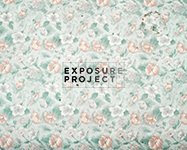In anticipation of the third issue of The Exposure Project Book, slated for release in late August, I am going to be posting some work that will be included in the publication.
Fran Osborn-Blaschke is a Boston-based photographer whose project
Curve Of The Earth takes a rather scientific approach to landscape photography. As the artist states:
"Think of how cities and countries appear on a schoolroom globe. To make these, the camera points directly East for sunrises, directly West for sunsets and is tilted to accurately represent how the horizon is inclined at its latitude. By making photographs of the same location at different times of the year it is possible to capture the movement of the Sun as it slides North and South along the horizon."




From Top To Bottom:
Sunset from Grand Hotel, February 24, 2003
Brugge, Belgium
51° 12' 27.75" N lat./ 03° 13' 14.00" E lon.
Sunset, Boston from Deer Island, B.H.I., June 21, Summer Solstice, 2006
Boston, Massachusetts
42° 21' 17.52" N lat./ 70° 58' 06.67" W lon.
Sunrise, Dorchester Bay from Columbia Point, December 21, Winter Solstice, 2005
Dorchester, Massachusetts
42° 18' 49.93" N lat./ 71° 01' 58.52" W lon.
Sunset with Seal Rocks, March 9, 2001
San Francisco, California
37° 46' 30.46" N lat./ 122° 30' 46.48" W lon.
All Images © Fran Osborn-Blaschke






















































